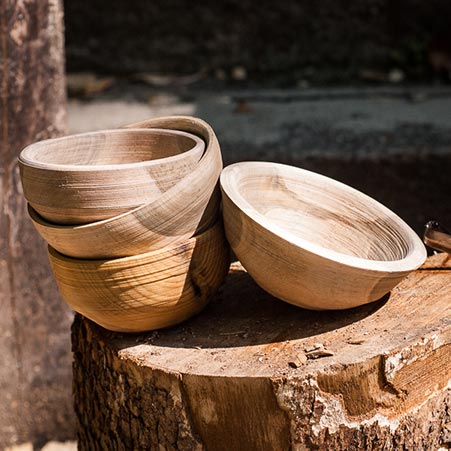Carving spoons with axes and blades
An axe quickly turns a log into billets – workable bits of wood. But, that's not end of axe-work. They're much faster, than pushing and pulling a knife-blade through wood. So, I use a carving axe to slice billets into blanks – roughly spoon-shaped bits of wood
Blade-work starts after the spoon blank is close to its final shape. Then, I use a hook-knife to hollow out the bowl. Once I've got the general shape, and a bowl, I move on to a straight-bladed carving knife to finish up the rest of the shaping.
After drying a few days, I'll go over the spoon once more with the blades – adding in any detail or decoration. This leaves a smooth, tool-finish without sanding. (Sanding tends to make wood feel a bit fluffy when it gets wet.)



